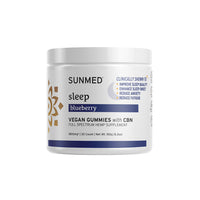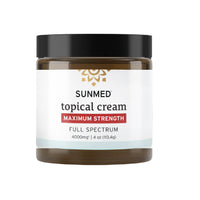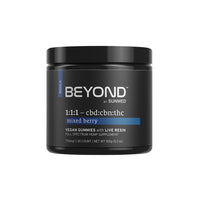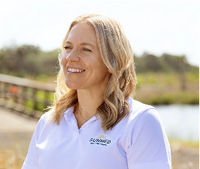10 Ways To Get Rid of Leg Pain
If you’re dealing with discomfort in your legs, here’s what you need to know about quickly relieving tension and soreness.

Leg discomfort is no joke. Whether it hits after a tough workout, a long day on your feet, or seemingly out of nowhere, it can be frustrating and sometimes even overwhelming. Leg pain can significantly impact your ability to complete daily tasks, or even to relax at bedtime.
There are several ways you can soothe tired, overworked legs and get back to feeling your best.
What causes leg discomfort?
Leg discomfort can come from a variety of everyday factors. Sometimes it’s an obvious cause, like an intense workout or standing for too long, but other times it might seem to appear out of nowhere. Understanding the cause of your discomfort can help you prevent it from coming back.
Overuse or muscle fatigue
One of the most common causes of leg discomfort is simply overworking your muscles. Whether you’ve had an intense gym session, a long shift on your feet, or a day filled with extra walking, your legs might feel tired and sore afterward.
Poor circulation
Sitting for long periods, whether at a desk or during travel, can slow down circulation and cause your legs to feel heavy or stiff. Elevating your legs and moving around regularly can help keep everything flowing properly.
Dehydration and mineral imbalance
Not drinking enough water or lacking essential minerals like magnesium and potassium can make muscles feel tight or overworked. Staying hydrated and eating a balanced diet helps maintain proper muscle function.
If you have a history of leg injury, it's possible that your existing condition can be exacerbated by other factors that contribute to leg discomfort.
1. Stretch your legs out
A little movement can go a long way when it comes to leg discomfort. Stretching helps loosen tight muscles, improve circulation, and bring much-needed mobility to areas that might be feeling tense.
Gentle yoga can do wonders for leg cramps. There are countless free yoga resources online, including instructional videos that show you how to stretch your legs at home with no special tools or equipment. A 10-minute session can bring lasting comfort without a significant amount of exertion.
2. Massage the area
If your legs are feeling tense, a gentle massage can work wonders. Massaging helps increase circulation, encourage relaxation, and break up tight spots that might be contributing to discomfort.
You can use body oil or cream to comfort your legs from the surface while you massage. Place a small dollop of cream on the area before you get to work. As you massage, the botanical ingredients will work to provide support from the outside in.
If you find it difficult to massage your legs with your hands, you can opt for a foam roller or an electric massage tool to make the process easier.
3. Use heat or cold therapy
Both heat and cold have their place when it comes to leg recovery. The key is knowing when to use each one.
Use cold therapy (like an ice pack or cold compress) if your legs feel swollen, irritated, or overworked. The cool temperature helps calm things down and brings balance back to tired muscles. Use heat therapy (like a heating pad or warm towel) if your legs feel stiff, tight, or sore after a workout. Heat encourages relaxation and allows the muscles to release tension.
A warm bath with Epsom salt can be a great alternative to heat therapy if your whole body would benefit from some deeper relaxation. Soak for an hour while you read a book or watch a show. The warm water will do the work while you relax.
4. Try CBD for post-workout support
Many athletes use CBD for muscle recovery. CBD is a hemp-derived supplement that supports the body's natural recovery processes.
CBD works to stimulate your body's endocannabinoid system, which is a large and complex network of receptors that live within many of the body's vital systems. CBD supports your body's natural efforts to promote recovery.*
CBD topical cream can provide targeted support directly to your legs. CBD full spectrum tincture works to provide holistic support to your recovery processes. You can use the two in conjunction for maximum soothing effects.
5. Elevate your legs
If your legs feel heavy or tired, one of the easiest ways to encourage recovery is by elevating them above your heart. The expression "kick back and put your feet up" is good advice.
If you have a recliner, all you need to do is adjust the chair so that your back is lower than your legs. Reclining the back and raising the footrest is simple. Keep your feet up for a while and catch up on a podcast.
If you don't have a recliner, you can prop your legs up with pillows while you lay in bed. Placing a few pillows under your knees is usually sufficient. There are also pillows designed specifically for this purpose. It may be worth investing in a leg support pillow if you commonly contend with leg discomfort.
6. Stay hydrated
Drinking enough water might not be the first thing you think of when it comes to leg discomfort, but hydration plays a huge role in muscle function and recovery.
When the body is properly hydrated, muscles are more flexible, circulation is smoother, and the risk of tension or cramping is lower. On the other hand, when the body is dehydrated, the muscles can become tight, making discomfort more noticeable.
Aim to drink at least eight glasses of water per day and even more if you’ve been sweating or exercising. Adding electrolyte drinks like coconut water can also help maintain balance. Just be mindful to choose drinks with little to no added sugar.
7. Move around
When your legs feel off, the last thing you might want to do is move. Sometimes, a little movement is exactly what your legs need.
Sitting still for long periods can cause tightness, which makes leg discomfort more noticeable. A short walk, some gentle yoga, or even a few bodyweight exercises can help get the blood flowing and bring back some ease.
If you sit most of the day at work, consider getting a computer riser or convertible desk that will allow you to periodically stand while you work. A brisk five minute walk during your lunch break can also help you incorporate more movement into your day.
8. Prioritize quality sleep
The body does some of its best recovery work while you sleep. If your legs have been feeling off, giving them proper rest is one of the best things you can do.
Your body needs a minimum of seven hours of sleep per night to fully recover, but some people may need as many as nine hours. Listen to your body and let it tell you what works best.
You may need to make some changes to your daily routine that prioritize restful sleep. Setting a bed and wake time that gives you a sufficient sleep window can help — make sure you're ready to go to sleep exactly at your bedtime.
Time can get away from you if you begin reading or relaxing when your bedtime alarm goes off, so plan to finish unwinding before you need to sleep.
9. Incorporate more magnesium into your diet
Magnesium is an essential mineral that supports muscle relaxation and encourages overall muscle balance. Magnesium helps to manage the process of muscles contracting and relaxing. If you aren't getting enough magnesium, you may experience muscle soreness.
Foods like bananas, almonds, and spinach are great natural sources of magnesium. You can also use a multivitamin that contains magnesium or a magnesium supplement. It may take a while for diet changes and new supplements to produce noticeable benefits, but it's important to remain consistent. If you consistently prioritize magnesium intake, you may be less likely to experience leg discomfort in the future.
If you’re concerned that you may have a magnesium deficiency, ask your doctor. It’s a simple test. If you do have a magnesium deficiency, your doctor will be able to provide you with a tailored remedy to relieve your deficiency.
10. Try compression socks
Some people with leg and back discomfort find that compression socks reduce their discomfort. This is especially true for people who experience swelling in addition to soreness. Compression socks promote blood flow by providing pressure to the veins in your legs.
If your leg discomfort also impacts your thighs, you can wear compression shorts. Compression shorts usually stop at the knee and provide support to your lower body. Keep in mind that true compression shorts are very different from shapewear garments.
While shapewear garments may have modest benefits, shapewear is designed specifically for aesthetic purposes. Make sure you’re choosing a garment designed for athletic purposes.
The bottom line
Leg discomfort doesn’t have to slow you down. With a few simple wellness practices, you can encourage recovery, support balance, and keep your legs feeling their best.
Your legs work hard for you every day. Taking a little time to care for them can make a big difference in how you feel. Making changes to your daily routine that prioritize your wellness can help to alleviate discomfort. Sunmed CBD products are designed with your wellness in mind. A topical and a tincture may work together to promote comfort while supporting your overall wellness.
*This statement has not been evaluated by the Food & Drug Administration. This product is not intended to diagnose, treat, cure, or prevent any disease.
Sources:













